The newest registered user is bitaacademy
Our users have posted a total of 44533 messages in 6560 subjects

WORLD CLOCK
INFO VINE * 50 Machines That Built America *
Valley of the Sun Casual Club :: WORDS , FACTS , DATES , GAMES & TRIVIA & HISTORY :: INFORMATION VINE
 INFO VINE * 50 Machines That Built America *
INFO VINE * 50 Machines That Built America *

Photo Courtesy: [Sean Gallup/Getty Images News/Getty Images]
Do you enjoy eating microwaved popcorn while watching a movie on TV? Perhaps you like to go for a drive and sip on a fountain drink from your favorite convenience store or restaurant? These things, and so much more, weren't even possible at one time. Have you ever wondered where our modern conveniences came from? If you are curious, read on to discover more about the 50 machines that built America!
The Soda Fountain
In 1767, Jackson's Spa in Boston became the first to sell bottled mineral water in America. The drinks were believed to have therapeutic properties, giving rise to what became soda water. These "effervescent waters with curative powers" were introduced to Americans by the former Yale chemistry professor, Benjamin Silliman. In New Haven, Connecticut, his operations were so successful that Silliman hired three partners, built a bigger dispenser, and opened a pump room. Soon, soda fountains opened in New York City, Baltimore, and Philadelphia.

Photo Courtesy: [Minnesota Historical Society/Corbis/Getty Images]
Today, drugstores, restaurants, concession stands, and convenience stores use soda fountains to dispense carbonated soft drinks, called "fountain drinks." "Soft drinks" are made by combining chilled and purified water with carbon dioxide and flavored syrup or syrup concentrate. A "soda jerk," like the one in the 1905 photo above, dispensed unflavored carbonated water and mixed syrups into a glass by hand. Ice harvesters cut ice from frozen lakes and ponds in the winter and stored the blocks in ice houses to chill sodas in the earliest days. "Iceless" fountains were created in the early 20th century that used brine to keep soft drinks chilled.
The Automobile
In 1893, Henry Ford became the Edison Illuminating Company of Detroit's Chief Engineer. The promotion gave him the funds needed to experiment on gasoline engines, which led to the invention of the Ford Quadricycle, pictured below. He sought ways to improve the design and met with Thomas Edison in 1896 before building a second vehicle in 1898. On August 5, 1899, Henry Ford founded the Detroit Automobile Company.

Photo Courtesy: [Bettmann/Bettmann/Getty Images]
William C. Durant, the Dodge Brothers, Walter Chrysler, and the Studebaker-Packard Corporation also began manufacturing cars around Ford's company over the next several years. As a result, Detroit, Michigan, became the world's "automotive capital." The industry created jobs starting in the Midwest and spreading out across the country. Soon, auto-repair garages, gas stations, and parts-supplier factories were built to support the new business boom.
Electric Bread Slicer
Have you ever heard the expression "the greatest (or best) thing since sliced bread?" The phrase originated as a statement of enthusiastic appreciation for a new invention or discovery. On July 6, 1928, The Constitution-Tribune in Chillicothe, Missouri, published an announcement that brought incredible excitement to Americans. It read, "Announcement by M.F. Bench of the Chillicothe Baking Company of a new sliced bread service is significant in that it gives the Chillicothe Baking Company the distinction of being the first bakers in the world to sell sliced bread to the public."

Photo Courtesy: [genkur/Stock Photos/Bread/iStock]
Mr. Frederick Rohwedder of Davenport, Iowa, designed the first electric multi-blade bread slicing machine prototype. Unfortunately, it was destroyed in a fire in 1912. That didn't stop Rohwedder from trying again, though. After continued efforts, he created and sold the first fully functioning machine to the Chillicothe Baking Company in 1928. Two years later, the Continental Baking Company baked and marketed the first sliced bread to be sold nationwide, called "Wonder Bread."
The AC Electric Motor
Between 1830 and 1831, Michael Faraday and Joseph Henry discovered that a changing magnetic field could induce an electric current in a circuit. The origin of alternating current (AC) technology is generally accredited to Faraday because he submitted his documentation first. Many American inventors worked to advance the field during the late 19th century, especially after the discovery that long-distance high voltage transmission was possible with alternating currents.

Photo Courtesy: [Bettmann/Bettmann/Getty Images]
The first person to patent a two-phase AC power transmission with four wires was the American inventor Charles Schenk Bradley in 1887. The inventor Nikola Tesla, pictured above in his laboratory, significantly contributed to the field with his Tesla coil. The electrical resonant transformer circuit produced high-voltage, low-current, high-frequency alternating-current electricity. The Serbian-American's work led to innovations in "electrical lighting, phosphorescence, X-ray generation, high frequency alternating current phenomena, electrotherapy, and the transmission of electrical energy without wires."
The Coin Striking Machine
In 1792, Philadelphia became the home of the first United States Mint, when the city was still the U.S. capital. The engraving and design departments of the Mint, as well as the master die production for U.S. coinage, still reside in Philadelphia. Minting is the process of manufacturing coins using a kind of stamping. A coin die is one of the two metallic pieces used to press an image into a blank metal disc. The term "striking" came from primitive manufacturing methods when artisans used a hammer to strike a plain piece of metal to deform it around an image. The coin-striking machine sped up the process and made approximately 120 coins per minute, facilitating trade and commerce.

Photo Courtesy: [ROMEO GACAD/AFP/Getty Images]
In medieval times, coin engravers were guild members. Iron dies were used to cold-strike blank metal discs, or "planchets." Coin dies were primarily made from punches that allowed the metal to be displaced instead of removed. Archaeologists discovered that artisans from the Middle Ages relied on engraving tools to layout designs and create detailed punches. However, the Roman Empire's coin manufacturing from the fourth century B.C. had the strongest influence on modern minting practices.
Grain Elevators
Agriculture is a central component of trade and commerce throughout the United States, particularly in the South and the Midwest. Before the invention of grain elevators, grain was stored in bags or bins. The first steam-powered elevators, constructed in 1843 in Buffalo, New York, by Joeseph Dart Jr., allowed farmers to store grain in bulk with ease. “Dart’s Elevator” was seven times faster than other commercial designs at the time. The technology spread across America quickly with the help of the expanding railroads and Buffalo’s proximity to the Erie Canal.

Photo Courtesy: [Minnesota Historical Society/Corbis Historical/Getty Images]
Buffalo, New York's steam-powered grain elevators expanded production from 111 million bushels of wheat to 280 million. The flour milling industry experienced a surge that coincided with the new technology, and Buffalo soon became America's top flour producer, displacing Minneapolis' position. The fire-prone wooden models were phased out for structures made of steel and concrete over the years, ensuring food for millions of people. The photo above shows the Stillwater Market Company grain elevator on Water Street in Stillwater, Minnesota, taken on August 22, 1918.
Harley-Davidson Motorcycles
"Harley-Davidson, Inc.," "H-D," or "Harley," is one of only two major American motorcycle manufacturers that survived the Great Depression. The company was founded in 1903 in Milwaukee, Wisconsin, by William S. Harley, Arthur Davidson, Walter Davidson, and William A. Davidson. Harley-Davidson motorcycles are famous for their style customization that paved the way for chopper-style motorcycles. Traditionally, heavyweight, air-cooled cruiser motorcycles with engine displacements greater than 700 ccs were produced. Eventually, more contemporary VRSC and middle-weight Street platforms were introduced too. Factories in York, Pennsylvania; Milwaukee, Wisconsin; and Kansas City, Missouri were the primary locations of Harley-Davidson manufacturing.

Photo Courtesy: [CARLOS SCHIEBECK/AFP/Getty Images]
Today, Harley-Davidson motorcycles are marketed and sold internationally. Licensed and branded merchandise is also popular and includes items such as "apparel, home décor and ornaments, accessories, toys, scale models of its motorcycles, and video games based on its motorcycle line and the community." Fans can enjoy visiting the company-sponsored, brand-focused museum, ownership clubs, and worldwide events. For example, on December 4, 1994, actress-singer Cher was photographed riding her Harley-Davidson motorcycle during the "Happy Harley Days/Rejoice on Rodeo" in Beverly Hills.
The UNIVAC I
The first American computer designed with business and administrative use in mind was the UNIVAC I. Scientific computers were used to solve complex numerical calculations. In contrast, the UNIVAC I worked with more simplistic mathematical equations and data transport operations. Its name stood for "UNIVersal Automatic Computer I" and was created by the Eckert–Mauchly Computer Corporation after Remington Rand (known as "Unisys" today) acquired the company.

Photo Courtesy: [H. Armstrong Roberts/ClassicStock/Archive Photos/Getty Images]
On March 31, 1951, the United States Census Bureau accepted the first UNIVAC, and it was dedicated three months later. CBS used the fifth machine, built for the U.S. Atomic Energy Commission, to predict the result of the 1952 presidential election. Amazingly, with a small sample of five and a half percentage of the voter turnout, the computer accurately predicted Eisenhower's landslide victory. The photo above depicts a 1950s-era data processing room with a Remington Rand UNIVAC computer and tape drives.
Tractors
In 1923, two farmers and a boy posed with a new Fordson tractor. The sign read, "We Are Power Farmers Using Fordson Tractor Purchased from Schoelkopf, Authorized Ford Sales and Service, Madison, Wisconsin." From 1916 through the 1930s, the Henry Ford Company manufactured and sold tractors on a global scale. The new farm machinery was only sold in the U.S. from 1918 through 1928, though.

Photo Courtesy: [L. F. Schoelkopf/Wisconsin Historical Society/Archive Photos/Getty Images]
The Holt Manufacturing Company patented the first functioning "caterpillar" tractor design in 1892. The company also became the United States' leading manufacturer of steam traction engines at the beginning of the 20th century. Tractors revolutionized farming by providing the power and traction to mechanize agricultural tasks. Their design allows implements to be mounted on or towed behind the machine. John Deere, founded in 1948, became a heavy competitor in the industry, growing to encompass five different series of tractors. In the 2020 Fortune 500 list of America's largest corporations, Deere and Company ranked number 84.
Power Tools
Power tools have played a significant role in building America. Black & Decker, Milwaukee, and DeWalt are household names leading the way in technology. Black & Decker even contracted with Martin Marietta to design tools for NASA, such as a zero-impact wrench that turned bolts without spinning the astronaut. They also made a cordless rotary hammer drill for the Apollo space program to extract rock samples, capable of functioning in extreme temperatures and zero-atmosphere conditions.

Photo Courtesy: [Construction Photography/Avalon/Hulton Archive/Getty Images]
In 1923, the inventor of the radial arm saw, Raymond E. DeWalt, founded his industrial tool company. In 1949, American Machine & Foundry Co., Inc. bought DeWalt Inc., and the company became a subsidiary of Black & Decker when it was sold again in 1960. S. Duncan Black and Alonzo G. Decker founded Black & Decker in 1910 in Baltimore, Maryland. A century later, on March 12, 2010, the company merged with Stanley Works, becoming Stanley Black & Decker. Today, the American manufacturer sells power tools, accessories, hardware, home improvement products, home appliances, and fastening systems.
AEG, Ryobi, Hoover, Dirt Devil, Vax, and the Milwaukee Electric Tool Corporation are subsidiaries of the multinational company Techtronic Industries. A.H. Petersen and Albert F. Siebert founded the A.H. Petersen tool company that was destroyed by a fire in 1923. The remaining assets formed the Milwaukee Electric Tool Corporation. In modern times, Milwaukee manufactures corded and cordless power tools, hand tools, pliers, hand saws, cutters, screwdrivers, trims, knives, and tool combo kits. In 2016, the Milwaukee Electric Tool Corporation was America's number one supplier of cordless power tools, with Stanley Black & Decker ranking at third place.
Trains
Before the spread of railroads, canals were the primary source of transportation in the United States. As train tracks were built throughout the Eastern states, investors saw the potential for expanded trade. Between 1795 and 1829, temporary railways, called "funicular railways," were utilized for land reclamation projects across Boston. From 1810 to 1829, a short horse-drawn railroad existed, known as the "Leiper Railroad." It became the first well-documented railroad and ran for three-quarters of a mile beyond the quarry. The Leiper Railroad was the nation's first chartered railway, first operational non-temporary railway, and first constructed railroad also meant to be permanent.

Photo Courtesy: [Bettmann/Bettmann/Getty Images]
In the photo above, the DeWitt Clinton locomotive had its maiden voyage on July 2, 1831. The Mohawk and Hudson Railroad commissioned the West Point Foundry in New York to design and build the train. Four years earlier, Summit Hill and Mauch Chunk Railroad launched the first U.S. railway to carry passengers. The company used special mule-drawn cars to take people on an 18-mile round trip along with the coal hoppers they moved. By 1829, the railway began charging fares for rides and opened unique tourism trips on Sundays. As a result, it was officially known as the world's first acknowledged roller coaster in 1932.
The Radio
In 1864, the British-American inventor James Clerk Maxwell used theoretical and mathematical forms to demonstrate how electromagnetic waves could propagate through free space. Two decades later, his theory of electromagnetism was proven by Heinrich Rudolf Hertz. The term "radio" that developed, as a result, went through three phases of evolution. The radio transmission eras were electromagnetic waves and experimentation, wireless communication and technical development, and radio broadcasting and commercialization.

Photo Courtesy: [FPG/Hulton Archive/Getty Images]
On August 31, 1920, station 8MK in Detroit, Michigan, was the first to broadcast a radio news program. The CBS network bought the station, and it is still on-air today as the all-news WWJ. On October 14, 1920, Union College in Schenectady, New York, launched the first college radio station under the personal call letters of then-student Wendell King. The family portrayed above gathered around a radio in approximately 1925 like many others across the nation. The activity improved national communication, interaction, and entertainment.
Electric Washers
Gone are the days of pounding rocks on clothes or rubbing them with sand to remove dirt and stains. The first laundry soap, created by the Romans, sped up the process slightly by using ash and animal fat. Along with many that followed, both methods required people to wash their clothing in a stream or river. The next time-saving process was to use a large pot to boil laundry in before laying them out on a flat board and beating them with a paddle known as a "dolly." By 1833, households used washboards with carved ridges to scrub material clean. Cleaning clothes and bedding remained a "communal ritual" through the Civil War era of 1861 to 1865.

Photo Courtesy: [Stringer/Hulton Archive/Getty Images]
Thomas Edison's contributions to the field of electricity paved the way for Americans to simply toss their laundry in a machine and go on about their day. Home washing machines were hand-powered until the late 1800s when steam and commercial belt models came out. James King and Hamilton Smith filed and obtained patents for the first "true modern washers" in 1851 and 1858.
The most popular model was displayed as an exhibit in 1876 at the Centennial Exposition in Philadelphia. Alva J. Fisher's "Thor," a drum-type washing machine with a galvanized tub, led the way in commercial innovations, marketed by Chicago's Hurley Machine Company. As of 2008, Los Angeles-based Appliances International bought the trademark and launched a new "Thor" line. The Maytag Corporation and the Whirlpool Corporation were the two biggest competitors from the earliest days of electric washing machines that are still available today. In 1893, Maytag branched out from producing farming equipment when business slowed in the winter, and they launched their first wooden-tub washing machine in 1907. In 1911, Whirlpool debuted an electric motor-driven wringer washer as the Upton Machine Company in St. Joseph, Michigan. A similar model from the 1950s is displayed above.
Refrigerators
The term "refrigeratory" was recorded as early as the 17th century. In 1755, a prototype was developed by the Scottish professor William Cullen. Then, in 1805, the American inventor Oliver Evans expanded "iceboxes," which used blocks of ice or snow to keep food cold. A closed vapor-compression refrigeration cycle produced ice by ether under vacuum. By 1834, Jacob Perkins had designed the first working vapor-compression refrigeration system, a closed-cycle machine that could operate continuously. Physician John Gorrie created the "Mechanical Ice Machine" in 1842, but it was a commercial failure. Gas systems such as ammonia or sulfur dioxide were used commercially for about 40 years before electric refrigerators appeared in homes across America. The chemicals were prone to leaking, rendering them unsafe.

Photo Courtesy: [Bettmann/Bettmann/Getty Images]
Fred W. Wolf of Fort Wayne, Indiana, produced the first electric refrigerators for household use in 1913, named "DOMELRE." Over the next five years, American inventors continued to improve on one another's designs. The "Kelvinator," started by Alfred Mellowes in 1916, became the first refrigerator with an option for automatic control after Frigidaire's founder, William C. Durant, bought Mellowes' company in 1918. The General Motors subsidiary founded in the early 1900s, the Delco-Light Company, manufactured electric generators and automotive motors before branching out into refrigerators like the one shown above.
Air Conditioning
The 1558 book Natural Magic, by Giambattista della Porta, is among the first written communications regarding air conditioning, or "A/C" methods. Porta described "nitre," referred to today as potassium nitrate, as suitable for cooling ice far below the freezing point. Inside the Great Hall of Westminster Abbey, Cornelis Drebbel performed an experiment before James I of England in 1620. Drebbel called his performance "Turning Summer into Winter," and he impressed the king by cooling a portion of the area with an apparatus of troughs and vats.

Photo Courtesy: [The Denver Post/Denver Post/Getty Images]
In 1758, Benjamin Franklin and John Hadley contributed to the technology that led to A/Cs in homes. Their experiments proved that evaporation of highly volatile liquids, such as alcohol and ether, could be used to reduce an object's temperature beyond the freezing point of water. In 1902, Willis Carrier designed the first machine to keep summer humidity from wrinkling magazine pages at a Brooklyn publishing company. The two corporation-founding giants, Thomas Edison and George Westinghouse, took the reigns and competed for several decades to be the top manufacturer in the United States. Although Edison's company, General Electric, consistently ranked number one, Westinghouse Electric Corporation was America's third-highest patent-earning business throughout the 20th century. The U.S. government granted Westinghouse engineers and scientists over 28,000 government patents.
Dishwashers
In today's world, dishwashers are a favorite household appliance. In fact, roughly 68% of American households own a dishwasher, with half using the machine between one to six times per week. Manually washing dishes requires physical scrubbing and considerably more time spent on the chore than an electric dishwasher can manage with 110 °F to 170 °F water. As permanent plumbing and running water became increasingly common, more features were added to domestic units, further freeing up people's time.

Photo Courtesy: [Bettmann/Bettmann/Getty Images]
In 1850, Joel Houghton registered the first mechanical dishwasher in the United States. It was made from wood and hand-cranked while water sprayed onto the dishes, but it was slow and unreliable. Five years later, L.A. Alexander patented a similar machine that included the added feature of a rack system. The 1950s saw the first signs of successful units, but they were too expensive for most households. Within two decades, the handy devices were integrated into several homes throughout America with various sizes and price points.
The Mechanical Reaper
With the help of Jo Anderson, Cyrus McCormick improved the design for a mechanical reaper his father, Robert McCormick Jr., spent 28 years working on. In 1832, Cyrus received a patent for a self-sharpening plow. Then, on June 21, 1834, he was granted a patent on the reaper. The family worked in the blacksmith/metal smelting industry and nearly went bankrupt during the Panic of 1837. However, sales of the mechanical reaper in the following years saved the family's finances while reducing human labor on farms and increasing productivity.

Photo Courtesy: [Topical Press Agency/Stringer/Hulton Archive/Getty Images]
During the first few years after McCormick got his patent for his innovation, the family hand-built all of the reapers in their shop. In 1845, he got a second patent for improvements made to the design and contracted a factory in New York to mass-produce the machines. Orders came in from farther and farther west, where farms were much more extensive, and the land was flatter. Wheat-growing countries across the globe soon began ordering McCormick's machines, industrializing agriculture, and creating more jobs. In 1851, France recognized him for his contributions, naming McCormick an Officier de la Légion d'honneur and a member of the French Academy of Sciences in 1878.
The Telegraph
You might be familiar with Samuel Morse for his development of the Morse code, but did you know that he first became famous as a talented portrait painter? When he was 41 years old, the American painter and inventor sailed to Europe. While on the trip, he met the electromagnetism expert Charles Thomas Jackson of Boston. After observing several of Jackson's experiments, Morse was inspired to create the first single-wire telegraph. Its success led him to set his painting, The Gallery of the Louvre, aside and obtain a patent for his ground-breaking invention. The first Morse telegraph is part of the National Museum of American History collections at the Smithsonian Institution.

Photo Courtesy: [John Kobal Foundation/Moviepix/Getty Images]
The telegraph was one of the first technologies with a solid scientific foundation and the first significant application of discoveries in electrical science. Telegraph electricians during the mid-19th century established the field of electrical engineering. Physics, oceanography, marine engineering, and electrical engineering experienced massive advancements because of submarine telegraphy, mainly due to its technical problems.
Until the telephone was invented in 1876, the telegraph remained the singular form of electrical communication. Telegraphy maintained its status as the king of rapid long-distance communication until after 1900 when practical long-distance telephony expanded. In 1924, American actor Jackie Coogan, pictured above, filmed a movie scene in which he used an electric telegraph machine. Morse code became the world's most popular form of telegraphy and remains the standard for rhythmic transmission of data today.
The Television
The history of television dates back to the early 1800s. Images were sent through wires using a rotating disc with 18 lines of resolution. Inventor Paul Gottlieb Nipkow called this earliest prototype an "electric telescope." Russian scientist Boris Rosing and English scientist A.A. Campbell-Swinton combined a cathode ray tube with a mechanical scanning system in 1907, furthering TV technology. Then, in the 1920s, Scottish inventor John Logie Baird and American inventor Charles Francis Jenkins designed mechanical televisions that used a rotating disk with holes arranged in a spiral pattern. The heydey of these models ended in 1934 when electronic television sets took off in earnest.

Photo Courtesy: [H. Armstrong Roberts/ClassicStock/Archive Photos/Getty Images]
Philo Taylor Farnsworth was only 21 years old when he invented the world's first electronic television. He had lived without electricity in his house until he was 14. Farnsworth dreamt of creating a system that could capture moving images, transform those images into code, then move those images along radio waves to different devices. He used a beam of electrons, similar to early cameras, to capture moving images, and the first television transmission was a simple line. A prospective investor challenged the young inventor, asking, "When are we going to see some dollars in this thing, Farnsworth?" In response, the Utah native famously transmitted a dollar sign through his television model. Farnsworth was a significant contributor to the growth of America, receiving over 169 United States and foreign patents throughout his lifetime.
During the late 1920s and early 1930s, the world's first television stations appeared across America. Charles Francis Jenkins created the TV station W3XK in addition to his mechanical television, and it aired its first broadcast on July 2, 1928. WRGB debuted in 1926 and has been the world's only continuously operating TV station from then until today. Televisions have gone through many changes over the years and have played a significant part in America's history.
The Airplane
Kitty Hawk, North Carolina, is a location known around the world thanks to Orville and Wilbur Wright. On October 2, 1902, the photo below was taken of Wilbur flying over the area on a double-ruddered glider. The Wright brothers invented the first motor-operated airplane and successfully tested it about four miles south of Kitty Hawk on December 17, 1903. The Wright Flyer is also known as the "Kitty Hawk," "Flyer I," or "1903 Flyer," and can be viewed in the National Air and Space Museum in Washington D.C. A Wright Brothers biplane also became the U.S. Government's first airplane on July 30, 1909.

Photo Courtesy: [Bettmann/Bettmann/Getty Images]
Did you know that the Wright brothers' sister, Katharine, had a hand in their success? She frequently represented Orville and Wilbur in public, speaking to dignitaries like Alfonso XIII, King of Spain, Georges Clémenceau, Alfred Harmsworth, 1st Viscount Northcliffe, and Prince Friedrich Wilhelm of Prussia. Katharine also helped manage her siblings' bicycle shop that funded their aviation experiments. The youngest Wright aided her older brothers with flight operations, brainstormed ideas, and wrote many of their communications. Katherine Wright became one of the few women ever to receive the French Legion d'honneur when France bestowed all three siblings with the award.
Garage Door Openers
In 1921, C.G. Johnson invented the "upward-lifting garage door." At the time, Americans were trading their horse and buggy transportation system for automobiles. The Ford Motor Company produced over one million new cars to keep up with demands. Johnson opened the first garage door plant in Detroit and helped establish the Midwest as an up-and-coming industry giant. He marketed the new upward-lifting garage door by mounting a miniature model of his invention to the back of his Model T Ford and gathering interested distributors from around the country. Five years later, C.G. Johnson invented the electric overhead garage door opener. However, they did not become popular until Chicago's Era Meter Company released a key-pad-operated model after WWII.

Photo Courtesy: [Hilaria McCarthy/Stringer/Hullton Archive/Getty Images]
Without knowing it at the time, two American inventors simultaneously created a design for wireless garage door openers. One was created in Illinois, and the other was made in Washington state. The concept for the technology built upon the military's system to detonate remote bombs during WWII. A simple transmitter communicated with a receiver and lifted the garage door up and out of the way. The technology became obsolete when consumers realized that the earliest remotes opened all nearby garage doors equipped with a receiver, not just their entrance. The photo above depicts driver Rosilynd Laskin using a 1970s handheld remote control to open her garage from her car.
Chicago Pile 1
The world's first artificial nuclear reactor, Chicago Pile 1 or "CP-1," was assembled in November 1942. On December 2, 1942, the first "human-made self-sustaining nuclear chain reaction" was initiated in CP-1. One-half of a watt of energy was steadily produced for 30 minutes before the project was shut down for safety reasons. Chicago Pile 1, tested beneath Stagg Field at the University of Chicago, became "the forefather of some of the most complex machinery that powers our world."

Photo Courtesy: [Bettmann/Bettmann/Getty Images]
The scale model above depicts onlookers witnessing the nuclear reactor's first successful run. CP-1 was designed by the "architect of the nuclear age," Enrico Fermi. The naturalized American inventor, dubbed the "architect of the atomic bomb," received the 1938 Nobel Prize in Physics for his work. The United States saw advancements in statistical mechanics, quantum theory, nuclear physics, and particle physics through Fermi's contributions.
The Rube Goldberg Machine
Rube Goldberg was an American cartoonist, sculptor, author, engineer, and inventor. His full name is Reuben Garrett Lucius Goldberg, and he was a founding member and first president of the National Cartoonists Society. Goldberg is famous for his cartoons depicting "complicated gadgets performing simple tasks in indirect, convoluted ways." A "Rube Goldberg machine" is a chain-reaction-type machine intentionally designed to perform a simple task indirectly through a complex series of unrelated devices. In 1948, Goldberg was awarded the Pulitzer Prize for one of his political cartoons that satirized nuclear power.

Photo Courtesy: [Boston Globe/Boston Globe/Getty Images]
Rube Goldberg machines became a popular culture sensation as early as 1930 when the inventor wrote the first feature film for The Three Stooges called Soup to Nuts. Goldberg made a cameo appearance in the movie that also featured one of his machines. Since then, films, cartoons, and television shows have showcased several different versions of the contraptions. Examples include the John Wayne movie Hatari!; Sesame Street; Looney Tunes; Tom and Jerry; Wallace and Gromit; Pee-wee's Big Adventure; Edward Scissorhands; Back to the Future; Honey, I Shrunk the Kids; The Goonies; Gremlins, and the Home Alone movie series.
In 1949, two fraternities at Purdue University competed against each other in a challenge they named the "Rube Goldberg Machine Contest." The competition was held annually from 1949 to 1956. In 1983, the contest was renewed as a university-wide competition. Six years later, the Rube Goldberg Machine Contest evolved into a national competition, and by 1996, a high school division was added. A winning device is required to complete a simple task in 20 to 75 steps. Goldberg's youngest son created a not-for-profit 501(c), Rube Goldberg Inc., responsible for hosting the annual American event. Contestants displayed their contraptions at MIT, pictured above, during the event held on November 25, 2011.
Pressure Washers
Another time- and energy-saving machine is a pressure washer, or "power washer." A high-pressure water spray is released from a hand-held nozzle to clean the surfaces of buildings, cars, concrete surfaces, statues, and more. The machine helps remove dirt, grime, mold, loose paint, mud, and used chewing gum quickly and effectively. Pictured below, a volunteer used a power washer to clean the steps of the Lincoln Memorial in Washington, D.C.

Photo Courtesy: [Chip Somodevilla/Getty Images News/Getty Images]
The invention of pressure washers was accidental. In 1926, Frank Woldert II was manufacturing gas-fired water heaters, boilers, and whiskey picks for a company in Pennsylvania. While working on a whiskey still, Woldert realized that grease on the garage floor was efficiently removed with high-pressure steam being forced through a small hole in a tube. He expanded on the idea by adding chemicals to the high-pressure stream to make cleaning tough substances even easier. By the 1960s and 1970s, pressure washers had experienced massive improvements and success.
Elevators
Elisha Otis invented the first freight elevator equipped with a safety device to prevent falling in 1853. He had moved to Yonkers, New York, in 1852 and was inspired by his employer Josiah Maize's need to lift heavy equipment to the upper floor of his bedstead factory. Otis displayed his invention at the New York World's Fair in 1854, increasing public confidence in the safety of his elevator. Three years later, he opened the Otis Elevator Company, where steam-powered passenger elevators were manufactured. His company installed the world's first public elevator in E.W. Haughtwhat & Company's five-story Manhattan department store. To this day, the Otis Elevator Company remains the most lucrative elevator producer in the world.

Photo Courtesy: [Mario Tama/Getty Images News/Getty Images]
During the third century B.C.E., elevator prototypes existed that were raised and lowered by human, animal, or water wheel power. King Louis XV commissioned a personal lift in 1743 to connect his apartment with his mistress Madame de Châteauroux's quarters above his. The king's early-day elevator was operated by his servants and featured a counterweight to keep the machine from falling while in use.
Bulldozers
Do you want to see a replica of the first bulldozer design? In Morrowville, Kansas, the city park is home to the 1923 model farmer James Cummings and draftsman J. Earl McLeod invented. The pair built the original machine in Morrowville and filed for a U.S. patent for an "Attachment for Tractors" on January 6, 1925. Bulldozers were first used as adaptations for Holt farm tractors to plow fields. Due to their capabilities traveling across soft ground, building roads, and logging, the technology of these machines contributed to the development of the armored tank in WWI.

Photo Courtesy: [William Thomas Cain/Stringer/Getty Images News/Getty Images]
Bulldozers grew in popularity after the mid-1930s. As the need for more robust machines grew, so did the design for bulldozers over the years. Surface mine operators in the United States, Australia, and Japan eventually required the aid of the "world's largest production bulldozer," the Komatsu D575A series. It weighs an astounding 289,580 pounds and measures 38 feet five inches long by 24 feet three inches wide.
The Automobile Fuel Pump
Sylvanus Freelove Bowser invented the first commercial fuel pump in 1885. He sold it to Jake Gumper, a man who owned a grocery store in Fort Wayne, Indiana. Two years later, he obtained a patent for his creation and founded the S.F. Bowser & Company. Before Bowser's fuel pump, customers bought fuel at hardware stores and drug stores.

Photo Courtesy: [Frederic Lewis/Archive Photos/Getty Images]
Richard C. Corson invented the shut-off valve for fuel pumps in 1939. He was inspired by a worker filling a barrel with gasoline on a loading dock at the Socony-Vacuum Oil Company, and Corson believed that the process was inefficient. After that, his idea for a "butterfly float" came about from hearing the sound of a toilet flushing. Paul Wenke assisted Richard Corson in building a prototype and filing a patent. Today's gasoline pump cut-off valve is an evolution from the device initially created to fill multiple barrels of gasoline simultaneously.
Last edited by Paul on Sun 11 Feb 2024, 7:13 am; edited 1 time in total
 Re: INFO VINE * 50 Machines That Built America *
Re: INFO VINE * 50 Machines That Built America *
Aluminum Extrusion Press
In 1904, the first American aluminum extrusion press was built in Pennsylvania. The automotive and construction industries saw especially large advancements in technology as a result. Aluminum applications continued to soar as more uses were discovered. The need for aluminum extrusion boomed during WWI and WWII as the air force, army, and navy required ever-increasing numbers of machinery and transportation.

Photo Courtesy: [Denver Post/Denver Post/Getty Images]
Pictured above, Mrs. Ruby Matthews operated an extrusion press in 1963. Since the first press was built in Pennsylvania, aluminum extrusion has shaped the future of the country. Everyday household items, commercial machinery, transportation infrastructure, building construction, and all manner of vehicles benefit from the technology. The uses for aluminum have even reached space as we seek to explore and discover more about our universe.
The Lunar Module
On July 16, 1969, a Saturn V rocket launched Apollo 11 into space from Kennedy Space Center on Merritt Island, Florida. On July 21, 1969, Commander Neil Armstrong became the first person in the world to step foot on the moon. The Apollo Lunar Module Eagle pilot, Buzz Aldrin, soon joined him, and the pair gathered 47.5 pounds of "lunar material" to bring back to Earth. Armstrong took the image below of Aldrin standing with the Apollo 11 Lunar Module.

Photo Courtesy: [Heritage Images/Hulton Archive/Getty Images]
Meanwhile, the Command Module pilot Michael Collins flew Columbia in orbit around the Moon during the historic event. Today, NASA's Mars rover Curiosity is known as "the most advanced machine in human history to ever land on the surface of another planet and conduct scientific experiments." The rover was launched from Cape Canaveral on November 26, 2011.
The Microwave
A microwave oven, or simply "microwave," is a machine capable of heating and cooking food by exposing it to electromagnetic radiation in the microwave frequency range. In 1945, the American engineer Percy Spencer made a discovery that soon led to the creation of the first microwave oven. He was performing maintenance on a live radar set when he noticed a tingling feeling throughout his body and the complete melting of a chocolate bar in his pocket. The magnetron tube in the radar set was responsible for emitting the heat that liquified the candy.

Photo Courtesy: [John Prieto/The Denver Post/Getty Images]
Percy Spencer also invented the first microwave popcorn by aiming the magnetron tube at kernels of corn. That successful experiment inspired him to build a case to put the food in while it was heating. Spencer designed a metal box with an opening on one side and the magnetron tube feeding into it from the opposite side. During one of his experiments, the engineer attempted to cook an entire egg in his machine. However, the egg exploded in his colleague’s face. Afterward, Spencer added a door to his microwave oven to prevent similar incidents from happening in the future. The image above depicts a completed model in 1977.
The Jukebox
The jukebox has been called "a true icon of American culture." During the Great Depression, the coin-operated music-playing machine was a huge hit among scores of people looking for an inexpensive form of entertainment. The term "jukebox" wasn't used until around the 1930s. Since its invention in the 1890s, it was typically called the "Automatic Coin-Operated Phonograph, the"Automatic Phonograph," or the "Coin-Operated Phonograph."

Photo Courtesy: [Bettmann/Bettmann/Getty Images]
Louis Glass and William S. Arnold modified the Edison Class M Electric Phonograph with a coin mechanism, creating the first "nickel in the slot phonograph." The model allowed people to use one of four listening tubes instead of a speaker to hear the music. Edison never intended for the device to be used for entertainment purposes. He considered the phonograph's most important function to be an aid for office dictation. However, in 1927, the Automated Musical Instrument Company launched one of the first selective jukeboxes, giving Americans a choice of which song they listened to. The machine debuted around the same time electronically recorded music was introduced, propelling the jukebox into commercial success.
The Automatic Voting Machine
Jacob H. Myers patented the first mechanical lever voting machine in 1889. The technology developed in Rochester, New York, was later known as the "Myers Automatic Booth." It prevented overvotes, sped up the vote-counting process, and reduced occurrences of illegal vote counting. By 1930, nearly every major U.S. city was equipped with a lever machine.

Photo Courtesy: [PhotoQuest/Archive Photos/Getty Images]
On August 17, 1965, the Votomatic punch-card voting system was patented by Joseph P. Harris. William Rouverol helped him to initiate the system that tallied votes with a computerized counting machine. Voters marked their choices by punching a hole in a pre-scored card. The automatic voting machine has improved over the years, making it quicker and easier for Americans to have their votes recorded.
The Laser
The American engineer and physicist Theodore Maiman invented the world's first laser, sparking the development of numerous other types of lasers over the years. On May 16, 1960, Maiman's laser was successfully fired for the first time. He made a statement with his employer, Hughes Aircraft Company, announcing the development on July 7, 1960, during a press conference in Manhattan. In 2017, UNESCO declared May 16th the International Day of Light, commemorating the anniversary of Theodore Maiman's historic achievement.

Photo Courtesy: [Alan Band/Fox Photos/Photoshot/Hulton Archive/Getty Images]
Eight years later, Dr. A. Stevens Halsted, pictured above, worked in Hughes Aircraft's research laboratories in Malibu, California. On August 13, 1968, he operated a continuous wave laser at several differently-colored wavelengths. The dark green beam was thought to one day provide scientists with deep space communications to distant planets. Then, in 2001, a laser signal from the satellite Artemis contacted the Earth observation craft, SPOT 4. NASA's ILLUMA-T, scheduled for future testing onboard the International Space Station, will be "a fully operational end-to-end laser communications system."
Lasers have many other uses today. They facilitate underwater communication networks and long-distance optical fiber relays. The medical field is aided by lasers used for bloodless surgeries, skin corrections, and cancer treatment, among other applications. Maiman's invention also helps accurately measure distance, store and retrieve information from a CD, and detect earthquakes.
The Electric Traffic Light
Earnest Sirrine filed a patent for the first automated traffic control system in 1910. The earliest traffic lights, also known as "traffic signals" or "stoplights," displayed the words "stop" and "proceed," although the text was not illuminated. A universal color code system communicates the right of way through a sequence of three illuminated lamps. A green light allows traffic to proceed while a yellow signal warns that traffic will be halted soon. When a stoplight turns red, traffic may no longer continue in the direction indicated by the traffic signal.

Photo Courtesy: [Kirn Vintage Stock/Corbis Historical/Getty Images]
The police officer seen above directed Chicago traffic in 1940, the same city Earnest Sirrine invented his traffic light model. In 1912, in Salt Lake City, Utah, police officer Lester Wire designed the first red-green light stoplight. Two years later, the American Traffic Signal Company erected a red-green traffic light in Cleveland, Ohio, that included a buzzer. Another police officer, William Potts from Detroit, Michigan, invented the first four-way, three-color traffic light in 1920. A museum in Ashville, Ohio, houses an exhibit of the nation's oldest working traffic light. The town's stoplight helped direct traffic from 1932 until 1982.
The Mechanical Cash Register
Ritty's Incorruptible Cashier was the name given to the first mechanical cash register. It was invented by James Ritty and John Birch in 1883. Ritty, a saloon owner in Dayton, Ohio, came up with the idea after watching a tool count revolutions of a ship propeller on a steamship. The "Ritty Model I," as it was also called, helped stop employee theft and embezzlement.

Photo Courtesy: [Bettmann/Bettmann/Getty Images]
Cincinnati resident Jacob H. Eckert purchased the cash register business from Ritty shortly after the patent was issued. The china and glassware shopkeeper then founded the National Manufacturing Company to produce his machines. In 1884, John H. Patterson became the new business owner, and he renamed the company the "National Cash Register Company." Patterson made improvements to the design by adding a paper roll to record sales transactions.
The Typewriter
In 1870, Thomas Edison invented the Universal Stock Ticker, and it became the prototype for electric typewriters. Edison's machine was used to print letters and numbers remotely on a stream of paper tape. The data input came from uniquely-designed typesetting at the other end of a telegraph line. By the end of the century, the earliest models of typewriters were developed, improving Edison's design.

Photo Courtesy: [Keystone-France/Gamma-Keystone/Getty Images]
In 1900, the Cahill model became the first to be produced in a series. Two years later, the Blickensderfer Manufacturing Company of Stamford, Connecticut, began selling another brand of the typewriter. The next phase of designs came in 1914 when Kansas City's James Fields built the first "practical power-operated typewriter." He created a successful model in 1920 and sold it to Rochester's Northeast Electric Company in 1923, a business looking for a new market to sell their electric motors in. Two years later, Remington Electric typewriters were produced.
The Cotton Gin
In 1793, Eli Whitney invented a mechanical cotton gin, meaning "cotton engine." Wire hooks pulled cotton through a wire screen, and jams were prevented by continuously-moving brushes that removed loose cotton lint. His machine revolutionized America's cotton industry and has been called "one of the key inventions of the Industrial Revolution that shaped the economy."

Photo Courtesy: [Smith Collection/Gado/Archive Photos/Getty Images]
Whitney's cotton gin sped up production by separating cotton fibers from their seeds. Once isolated, the fibers were processed into goods such as clothing and bedding. The seeds extracted by the machine were either planted to grow more cotton or used to make cottonseed oil. The photo above depicts a 1939 model manufactured in Texas.
Windshield Wipers
On August 6, 1896, George J. Capewell of Hartford, Connecticut, filed a patent for windshield wipers, also known as "windscreen wipers." He requested the record for "an automated, motorized, wiper for cars, locomotives, and such land-vehicles." The U.S. Patent Office issued Mary Anderson a patent on November 10, 1903, for a "window cleaning device for electric cars and other vehicles." Anderson's invention operated from the inside of a vehicle when a driver pulled a lever, a design used on several early-day American cars.

Photo Courtesy: [picture alliance/picture alliance/Getty Images]
Today, nearly all motor vehicles are equipped with windshield wipers. They improve a driver's ability to see more clearly by removing rain, snow, ice, and other debris. Robert Kearns improved the design in 1963 by attempting to have wipers mimic the blinking of a human eye, inventing intermittent windshield wipers. Rear wipers came on the market during the 1940s and saw widespread usage after the 1970s.
The Sewing Machine
During the Industrial Revolution, sewing machines were invented to reduce the manual work of stitching fabric together. The clothing industry saw monetary success as the machines became more widespread, capitalizing on the new ability to produce the first ready-to-wear clothing and shoes. Walter Hunt is credited with designing the first American lockstitch sewing machine in 1832. The process was unreliable, however, and required time-consuming resetting of the needle and thread. Ten years later, John Greenough patented the country's first sewing machine.

Photo Courtesy: [Harold M. Lambert/Archive Photos/Getty Images]
Around 1945, young girls could use miniature sewing machines to make doll clothes, such as the one pictured above. By the 1970s, circuit boards, computer chips, and additional motors for independent control had been added to the design of the machines. New features such as digitized stitch patterns and combinations, automated thread cutting, needle positioning, and back-tacking became widely available to residential and commercial users. Singer, Janome, Brother, Viking, Juki, Pfaff, and Bernina are seven of the top sewing machine producers today.
Electric Razors
Did you know that electric razors were created because of a strange myth? In 1930, Jacob Schick patented the first electric razor. He was inspired because it was believed that if a man were to shave every day, he could live to be well over 100 years old! Unfortunately, the tale wasn't true. Shick passed away at the age of 59, only seven years after he invented his machine.

Photo Courtesy: [ullstein bild Dtl./ullstein bild/Getty Images]
Today, the Schick company is still one of the top producers of electric shavers. However, the Remington brand became a major competitor in 1937. Remington is responsible for the development of foil screens over blades to protect the skin against nicks. The innovation launched the company into the success it still enjoys today.
Phonographs
Thomas Edison used the phonograph inside of toys such as dolls and as a dictating machine. He invented the record players in 1877 and used a unique cylindrical tinfoil sheet to record and produce sound. The design of modern phonographs replaces the tinfoil sheet with a grooved vinyl disc, a turntable, and a needle. Sound is produced when vibrations are generated on the disc and amplified with speakers.

Photo Courtesy: [Hulton Archive/Stringer/Hulton Archive/Getty Images]
Thomas Edison is shown above with an Edison Standard Phonograph model in 1906. The wax cylinder player featured a sound horn supported on a tripod. The machines were invented in his West Orange, New Jersey lab and manufactured from 1898 to 1913.
The Vacuum Cleaner
Vacuum cleaners are a common appliance found in many modern American homes. According to a study conducted by the Vacuum Cleaner Manufacturers Association, a whopping 98 percent of U.S. households own a vacuum cleaner. These machines became popular from an unlikely source, too. You might be surprised to learn that William Hoover, who bought James Murray Spangler's vacuum sweeper patent in 1908, worked in his father's and grandfather's tanning and leather goods business. The Ohio native became president of the Electric Suction Sweeper Company, where new developments to the design of vacuums and innovative sales strategies flourished under his leadership.

Photo Courtesy: [William Gottlieb/CORBIS/Corbis/Getty Images]
In 1911, Hoover expanded his vacuum cleaner business by opening a factory in Windsor, Ontario, Canada. That facility was so successful that he had a second factory constructed in 1919 in Hamilton, Canada. Then, William Hoover's machines were shipped to England, and a headquarters was established in Perivale, England, in 1932. "Hoovering" has become synonymous with the term "vacuuming," and the red circle logo is known globally today.
The Electric Toaster
The 33rd U.S. president, Harry S. Truman, made toast for breakfast with his wife in the photo below. The invention of electric toasters in 1893 made it far quicker, easier, and safer than the method popularized by the Romans. They "scorched" bread by holding it in front of an open fire or placing it on a hot rock until it burned.

Photo Courtesy: [Bettmann/Bettmann/Getty Images]
Two Chicago inventors created the first fire-resistant toaster in 1905. That model only heated bread on one side at a time, though. The technology was improved again in 1913 when the automatic toast turner was built. The toasters we use today most closely resemble the series designed in 1919 when bread first popped up from a toaster when it was done cooking.
The Assembly Line
American manufacturing experienced a boom when the assembly line was invented during the Industrial Revolution. Prior to its creation, all assembly jobs were done by hand, one item at a time. The new technology allowed a few workers to perform the same tasks as a dozen people in a fraction of the time. As a result, labor and production costs decreased while productivity increased.

Photo Courtesy: [Library of Congress/Corbis/VCG/Getty Images]
In the image above, workers at the Ford car factory put the finishing touches on cars built at the Detroit plant around the 1930s. The automobile industry was among those that experienced the most significant growth from the innovative machines. Chicago's meatpacking industry is thought to be the first to use an industrial assembly line, beginning in 1867.
Loudspeakers
Loudspeakers, or simply "speakers," are a common component found in several different types of electronics. Radios, music players, television receivers, and public announcement devices like the one depicted below are popular examples. Alexander Graham Bell even filed a patent for a loudspeaker as part of his telephone on March 7, 1876. Since Edward W. Kellogg and Chester W. Rice created the first moving-coil, or "dynamic," speakers in 1925, the devices have gone through countless changes. Horn, electrostatic, magnetostrictive, bending wave, flat panel, plasma arc, and digital loudspeakers have been developed as a result.

Photo Courtesy: [Topical Press Agency/Stringer/Hulton Archive/Getty Images]
Rice and Kellogg changed the landscape when their model adjusted mechanical parameters to provide a flatter frequency response. In the beginning, loudspeakers used electromagnets, and their field core received energy from an additional connection to the driver. In 1930, Peter L. Jensen developed the first commercial fixed-magnet loudspeaker. However, the heavy iron magnets were unable to be replaced until lightweight alnico magnets became available after WWII.
Metro-Goldwyn-Mayer developed the first film-industry standard loudspeaker system in 1937. The two-way system used four low-frequency drivers and a multi-cellular horn with two compression drivers for higher frequencies. A massive two-way public address system was mounted on a tower at Flushing Meadows for the 1939 New York World's Fair two years later. The high-frequency drivers for that model are thought to be manufactured by Western Electric.
Instant Cameras
The world's first commercially-available instant camera was the Polaroid Land Camera Model 95. The American scientist Edwin Land invented the device for Polaroid in 1948, the year after he debuted instant film in New York. Keystone, Konica, and Minolta produced instant cameras that were manufactured to be compatible with Polaroid film. Kodak, however, was created to work independently from the photography giant. The Kodamatic 930 was released in 1982, but all of Kodak's instant cameras were taken off of the market in January 1986 due to the Polaroid lawsuit.

Photo Courtesy: [Oscar Sanchez/Moment Mobile/Getty Images]
Polaroid's success led to the production of their instant movie camera system called Polavision. Customers received a camera, film, and a movie viewer with their purchase. Once an instant movie was shot, the film was removed from the camera and placed inside the viewer for development. An additive mixed the primary colors to form the color image, setting the Polavision film apart. The system was short-lived due to the overall inconveniences involved in creating and watching the movies.
The Audiometer
Audiology is the study of hearing, balance, and related disorders. In 1914, the first commercially available electronic audiometer was patented by Western Electric. A specially-designed earphone was used to measure a patient's sensitivity to hearing. The Western Electric 1A cost just under the price for a house at the time. The more portable Western Electric 2-A Audiometer debuted in 1923. The machines were given a considerable technology boost when bone-conduction testing capabilities became a standard feature five years later.

Photo Courtesy: [Graphic House/Archive Photos/Hulton Archive/Getty Images]
The Maico D-5 was the first audiometer to incorporate circuitry based on the threshold of the average human ear. The Medical Acoustics Instrument Company, or "Maico," produced the machines in Minneapolis, Minnesota in 1936. Their inventor, Leland Watson, was the son of a prominent otolaryngologist. The child above had his hearing tested using a Maico Audiometer in 1948.
The Lie Detector
Did you know that the lie detector was invented by the man who created the American comic book superhero Wonder Woman? William Moulton Marston, who wrote under the pen name "Charles Moulton," gave his character the "Lasso of Truth" to help obtain justice. Marston called himself the "father of the polygraph." He and his wife, Elizabeth Holloway Marston, both contributed to developing the systolic blood pressure measurement used in the machines. The Marstons were both psychologists who studied human emotions and their physical reactions in response to various situations.

Photo Courtesy: [Keystone/Stringer/Hulton Archive/Getty Images]
Lie detector machines, or "polygraphs," are a two billion dollar industry today. Wired magazine reported in 2018 that an estimated two and a half million polygraph tests are performed in the U.S. each year. The bulk of the exams are administered to paramedics, police officers, firefighters, and state troopers. One example of this is shown above. On November 22, 1937, police officer Charles M. Fremgeen of Marlboro, New Jersey, was given a polygraph test at Fordham University. Reverend Walter C. Summer conducted the study to determine if Fremgeen had forced bribes from New York motorists. His attorney and Assistant Prosecutor E.J. Juska witnessed the event.
The Self-winding Wrist Watch
A self-winding watch, also called an "automatic watch" or "automatic," uses the wearer's natural motion to provide energy. During WWI, millions of troops were issued a "trench watch," a necessity that enabled soldiers to perform synchronized movements across broad battlefields. Before the war, it was far less common for men to wear wristwatches. The public's perception of the miniature machines shifted to a more favorable one as a result of the military's strategy.

Photo Courtesy: [Bettmann/Bettmann/Getty Images]
Max Strassburg is shown above, holding what is thought to be the world's largest self-winding wristwatch. Members of the Masquers Club, a private social club for actors in Los Angeles, California, presented the timepiece to an unnamed Hollywood star known for perpetually arriving late for filming. The club was created in 1925 by New York City actors who left Broadway to perform in motion pictures.
The Interface Message Processor (IMP)
In 1969, the Interface Message Processor (IMP) was created for the Department of Defense's Advanced Research Projects Agency, "ARPA." The American engineer Larry Roberts led the ARPANET initiative and was awarded the Draper Prize in 2001 "for the development of the Internet." Roberts and his team built upon packet switching techniques invented by Donald Davies and Paul Baran. The ARPANET was the predecessor to today's Internet.

Photo Courtesy: [Robyn Beck/AFP/Getty Images]
The first minicomputer, or packet-switching node, was the Interface Message Processor, or "IMP." It was built to interconnect participant networks to the ARPANET from the late 1960s to 1989. Today, we call the technology a "router" and use it to connect at least two networks.
On September 24, 2019, Dr. Leonard Kleinrock posed beside the University of California Los Angeles lab. The location is famous for being the spot where the first Internet message was sent. Kleinrock and his team had a breakthrough on October 29, 1969, by successfully having a computer "talk" to a machine in what we know as Silicon Valley. The historic birth of the Internet was called "a boon to equality and enlightenment."
 Similar topics
Similar topics» INFO VINE * 50 Images That Show The Life And Career of America's Dad Bob Saget *
» INFORMATION VINE * The History of The Dust Bowl In America *.
» INFO VINE * 50 Little-Known Facts About Bewitched *
» INFO VINE * The History of Comic-Con *
Valley of the Sun Casual Club :: WORDS , FACTS , DATES , GAMES & TRIVIA & HISTORY :: INFORMATION VINE

 Events
Events


































































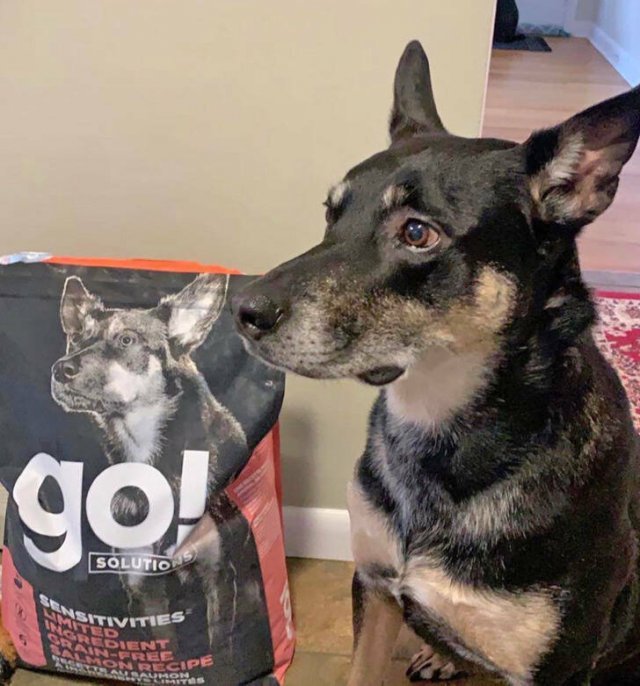

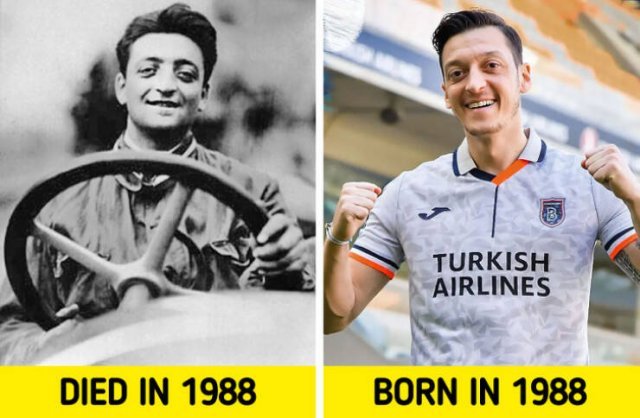
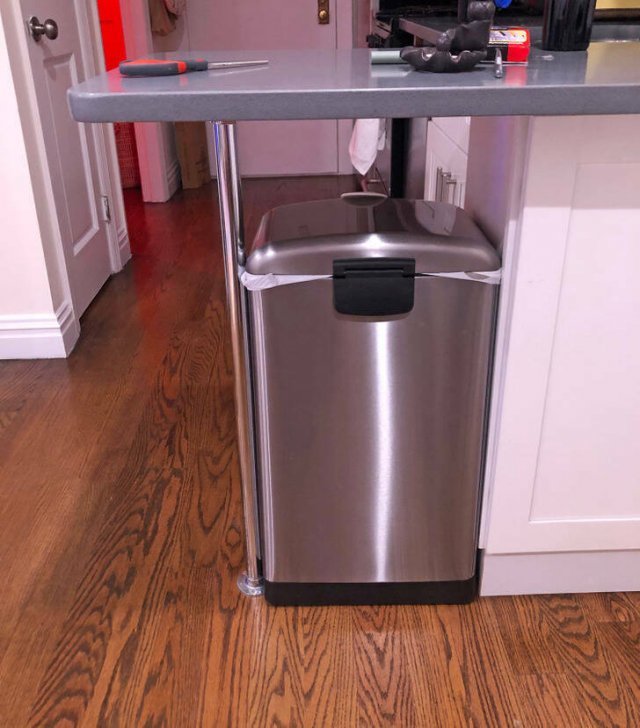


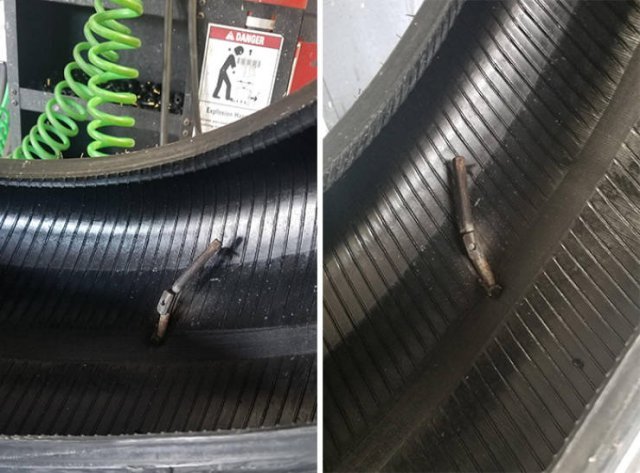
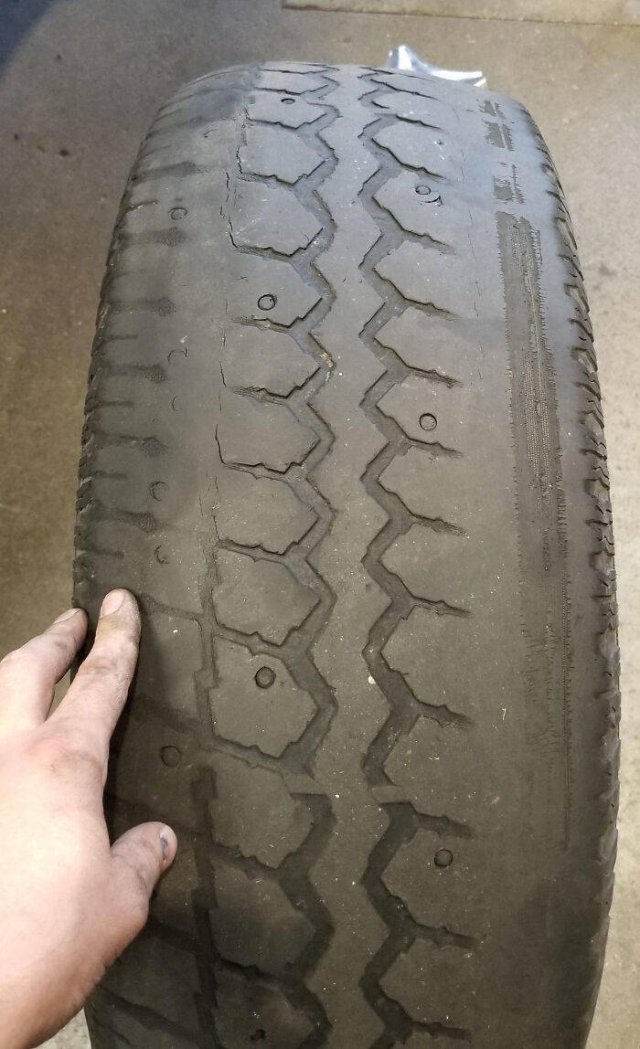

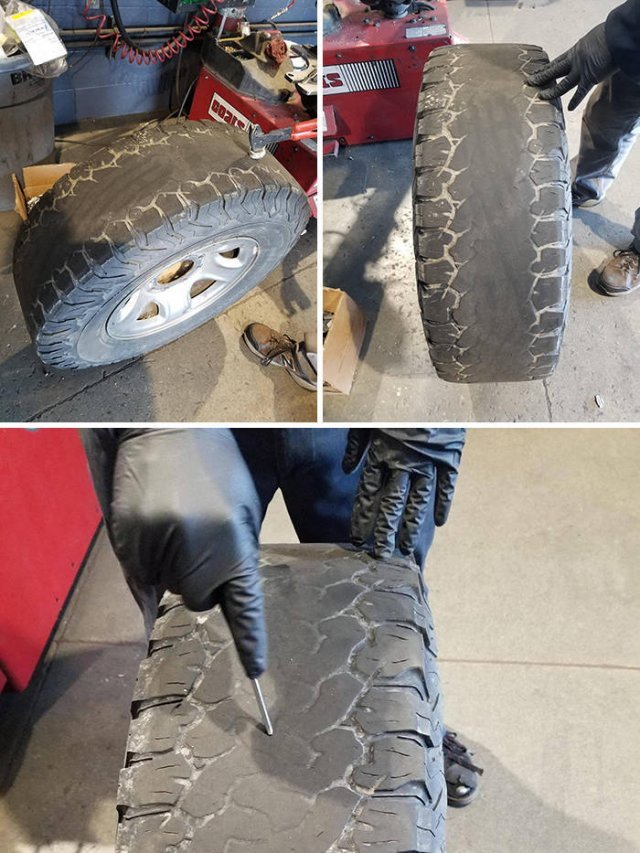
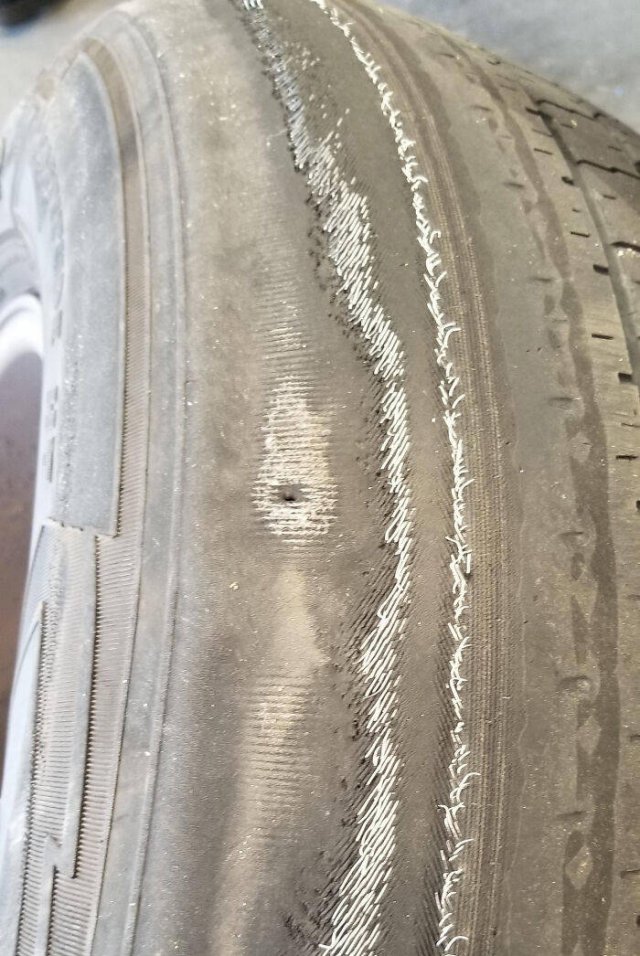
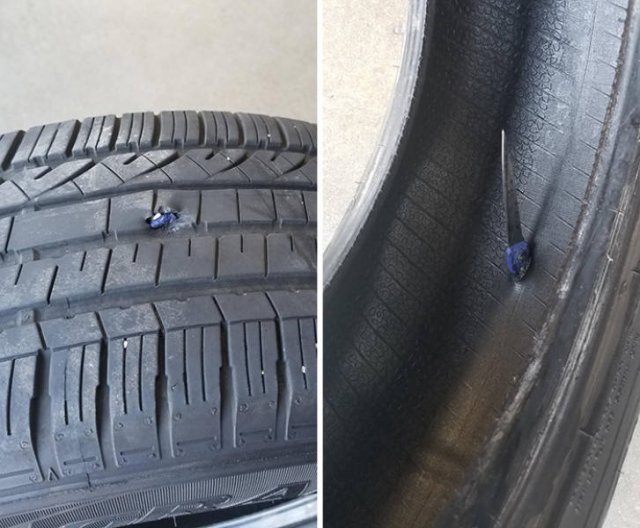
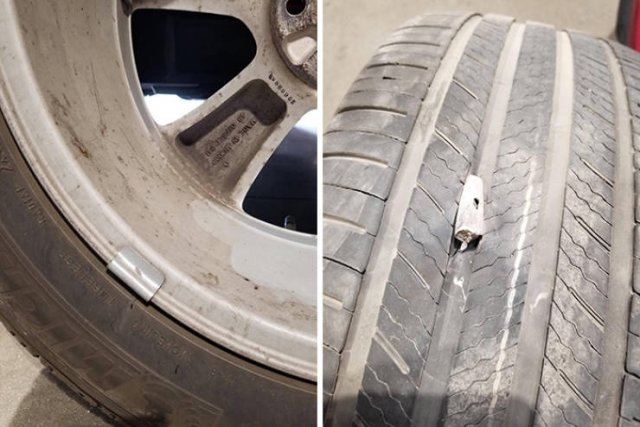
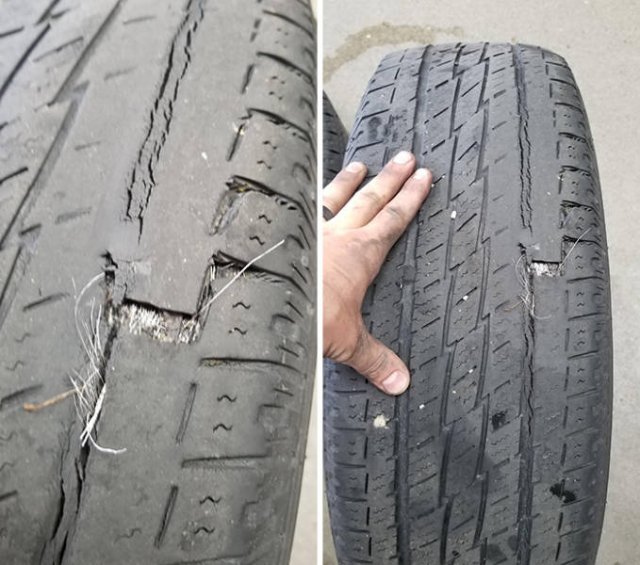
» APRIL NATIONAL CELEBRATION DAYS APRIL 27 2024
» MEMEZONA...3
» SEEING RED & FRECKLES...14
» YES,........BUT
» YES,.....BUT...2
» GET OUT THE MAP...2
» APRIL NATIONAL CELEBRATION DAYS APRIL 26 2024
» SUPER TRUCKS...
» APRIL NATIONAL CELEBRATION DAYS APRIL 25 2024
» WIZE TRIVIA QUIZ * How many pull ups did Gary Lloyd do in 24 hours to achieve the Guinness? *
» WISETRIVIA ANSWER PAGE
» IN THE LOCAL NEWS...4
» MOOMS's...9
» WORD DAILY Word of the Day: * aphorism *